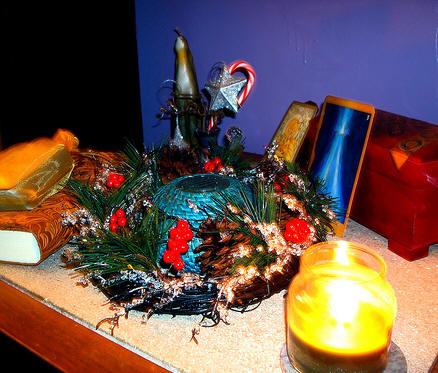Interesting Facts

Romans gave boughs
of Holly to friends and family during the
Dies Natalis Solis Invicti (Birthday of the Invincible Sun) to bring protection and good luck. They believed that it
was a symbol of fertility and warded off
lightning and witchcraft.
Figure 1: Romans celebrate the festival
of the sun with candles and holly leaves.

Druids believed that
both Holly and Oak represented future and foresight. During their celebration of
Alban Arthan they worshiped the Holly King and the Oak King. At every
winter solstice they believed that the Holly King, who ruled the dark part of
the year, died and the Oak King, who ruled the light part of the year, was
reborn. The Holly King later became known as Santa Claus.
Figure 2: Holly displayed
around an Alban Arthan alter.
Bach flower remedies,
which are a series of flower remedies used to treat negative human emotions, has
a remedy with Ilex aquifolium. It is used to treat feelings of jealously, envy,
and revenge.
In Britain it is believed to be very bad luck to cut down a
Holly tree.
After a Holly berry drops onto the ground, it will remain
dormant for at least 18 months.
Ilex aquifolium is
Latin for Holm Oak with sharp, pointed
leaves. It became known as English Holly because it was native to Europe and was
one of the many varieties of Holly already known.
Meet the Author...
|